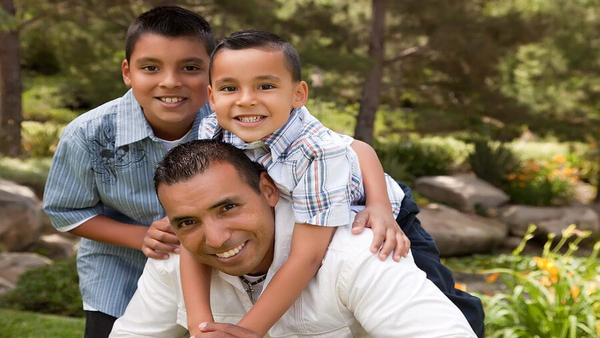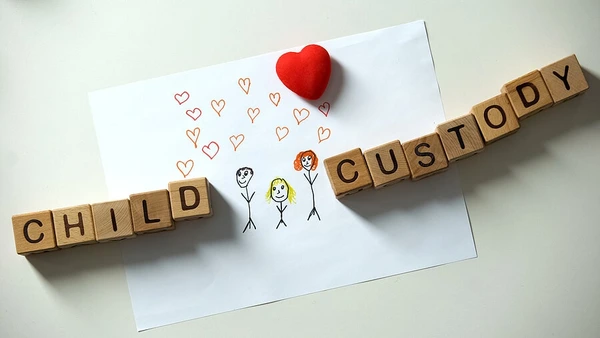When you divorce or separate, your main concern is ensuring your children are well taken care of.
In most cases, you’re encouraged to work out how to split responsibility for your children with your ex-partner privately. But this isn’t always possible.
In this situation you may need to make a child arrangements order.
What is a child arrangements order?
A child arrangements order is a court order that says who’s responsible for caring for a child. This will include who they’ll live with and the contact they’ll have with each parent.
Typically, they’re used when parents are unable to agree how to share the care of their children.
Who can apply for a child arrangements order?
Child arrangements order applications are usually made by biological parents. But anyone with parental responsibility can apply. This could be a stepparent, a legal guardian, or another relative.
It’s not unusual for grandparents to apply if they feel they’re not getting enough contact with their grandchild. However, they need to get permission from the court before doing so.
How do I apply for a child arrangements order?
The process of applying for a child arrangements order won’t be the same for everyone. This is because some issues may be dealt with at an earlier stage while complex cases may require additional court hearings.
Here’s an outline of the steps involved.
Step 1: Attend the Mediation Information Assessment Meeting (MIAM)
Before you can apply for a child arrangements order, you must first attend the Mediation Information Assessment Meeting (MIAM).
The MIAM helps determine if your child dispute can be resolved through mediation or other methods of dispute resolution. If a solution can't be met, it'll need to be taken to court.
In the meeting, a qualified mediator will help you and the other parent and caregivers to reach an agreement.
This step is usually required for any child dispute. An exception would be if you or your child have suffered or are at risk of suffering domestic abuse.
As with most disputes, avoiding court is the cheapest and least stressful option. So, it's worth trying to resolve things through mediation if you can.
You’ll be encouraged to try further mediation but this is optional. It's important to remember that the mediation process only works if all parties involved are willing to work together.
If you don’t come to an agreement during the MIAM, and you don’t think mediation is suitable for you, you can start the applying to the court for a child arrangements order.
If you decide you’re going to start court action, you’ll need to get a signed Mediation Information Assessment Meeting form to confirm that you did attend a MIAM.
Step 2: Submit your application to court
The next step is to send your application to court.
You apply for a child arrangements order by completing a C100 form. This is where you confirm the details of the children and other parties involved. You’ll also be asked to say which orders you’re seeking and why.
If you’re alleging domestic violence, you’ll need to complete a C1A form as well as the C100.
When you’ve completed the C100 form, you’ll need to send it to the court. You will then have to pay a court fee of £232.
You should send the application to the court that’s nearest to where the children concerned live.
Step 3: The other parent acknowledges receipt and returns the paperwork
When the court receives your application, they’ll send a copy to the other parent.
They have 14 days to return the completed answer form to acknowledge that they’re aware of proceedings.
The court will also send a copy to CAFCASS (Children and Family Court Advisory and Support Service).
Step 4: CAFCASS performs background checks
CAFCASS will carry out safeguarding checks on you and your ex-partner using information supplied by the police and social services.
Step 5: The First Hearing Dispute Resolution Appointment (FHDRA)
Everyone involved in the application will be invited to a First Hearing Dispute Resolution Appointment, also known as FHDRA.
This is the preliminary hearing of your court application and will be attended by a CAFCASS officer to provide support.
If you’re still unable to reach an agreement, there may be further court hearings.
How long your application takes from here depends on the complexity of your case. A case could be complicated for reasons such as safeguarding issues.
What can be included in a child arrangement order?
A child arrangements order usually includes several different conditions outlining where the child will live and who they can see.
You can use it to set out:
- Who your child will live with
- Where they will live
- When and how the child will see both parents
A common arrangement is that your child lives with you during the week and spends time at the weekend with the other parent. However, the precise nature of the arrangement is up to you, provided both parents get some contact with the child.
When granting a child arrangements order, what do the courts consider?
The courts will base their decision based on what’s in the child’s best interest. This will be decided by using the welfare checklist from the Children Act 1989.
Using this checklist, the courts will consider:
- The child’s wishes and feelings
- The child’s welfare, such as physical, emotional, and educational needs
- The likely effect on the child if their circumstances changed as a result of the decision. An example of this could be if the child has to change schools
- Any potential harm or danger that the child may currently or potentially face
- The capability of the child’s parents (or other potential caregivers) in meeting their needs
- The powers available to the court in the proceedings
Bear in mind that the court may decide that the child would be better if no order were made at all.
Are child arrangements orders legally binding?
Child arrangements orders are legally binding.
A parent who breaches an order is in contempt of court. If found guilty of this, a parent could face fines, enforcement, community service, or even jail time (although this is unlikely).
Can a child arrangements order be changed?
Child arrangement orders can be changed when it no longer suits the parents or the child.
You can ask the court to change an order. But you should try as much as possible to reach an agreement without going to court.
A court will only make changes to an order if they believe it’s in the child’s best interests.
Talk to a solicitor
There’s nothing more important than your children when you’re getting divorced or separating.
If you have questions about child arrangements orders, you should speak to a family solicitor. They’ll help you to negotiate with your ex-partner and reach an arrangement that works for everyone.
The Law Superstore lets you compare family solicitors near you – completely free.





